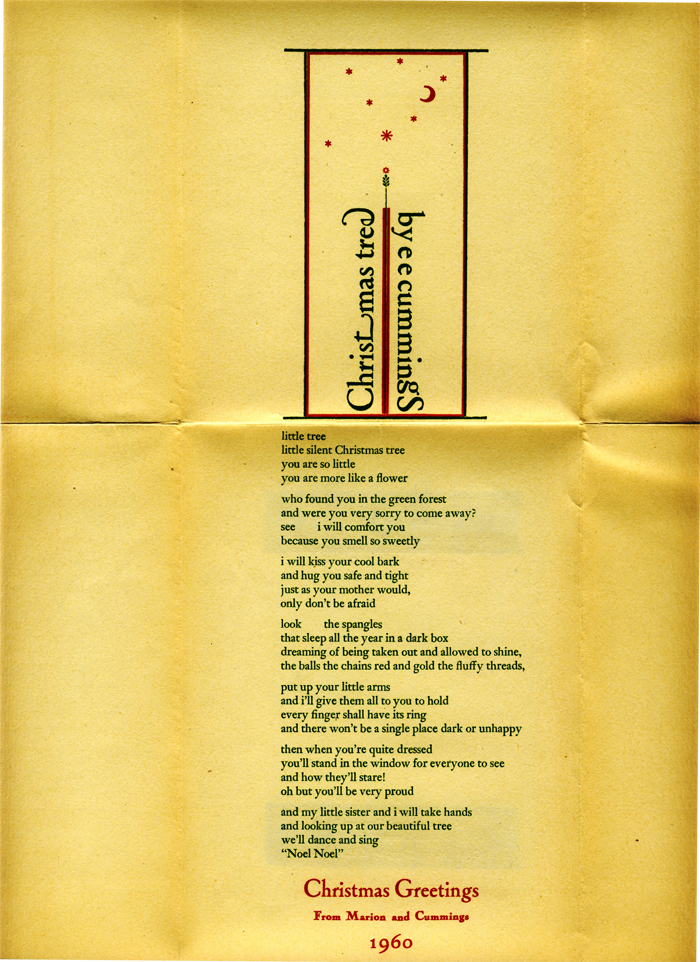
In this card from our archive, E. E. Cummings sends a Christmas greeting like no other, with his own poem and illustration. Cummings was known for his Christmas salutations, as he would send short messages and drawings. In December 1946, he sent a Christmas card to Ezra Pound with a drawing of his house on Patchin Place and the greeting “Merry Christmas And Happy New Year.” In December 1949, his drawing of choice was of a charging elephant holding a staff with a banner that read “Merry Christmas.”
Here Cummings shares an early poem, “little tree,” which was first published in The Dial in 1920. The Dial, which began as a transcendentalist publication edited by Ralph Waldo Emerson and Margaret Fuller, among others, had just been taken over by Scofield Thayer and James Sibley Watson Jr., who fashioned The Dial into a modernist publication that published poets like T. S. Eliot, D. H. Lawrence, Ezra Pound, Paul Valéry, W. B. Yeats, and, of course, Cummings, then unknown with the exception of a few college publications. That year The Dial published seven poems by Cummings, including his popular “Buffalo Bill ’s” and “little tree.” The poems varied widely in style, as the childlike tone and restrained, four-line stanzas of “little tree” differ greatly from the wild spacing and sprawling lines of “Buffalo Bill ’s,” considered more typical of his style. It would be three more years until Cummings would publish his first collection, Tulips and Chimneys (T. Seltzer, 1923), which included his “Buffalo Bill ’s,” but “little tree” would not appear in a book until a few years later. It appeared in XLI Poems, published in 1925 by The Dial Press.
By the time Cummings sent this card in 1960, those early days in his career were far behind him; he had received numerous honors, including an Academy of American Poets Fellowship, two Guggenheim Fellowships, the Charles Eliot Norton Professorship at Harvard, the Bollingen Prize in Poetry, and a Ford Foundation grant. He died two years later, on September 3, 1962, at which time he was the second most widely read poet in the United States.
